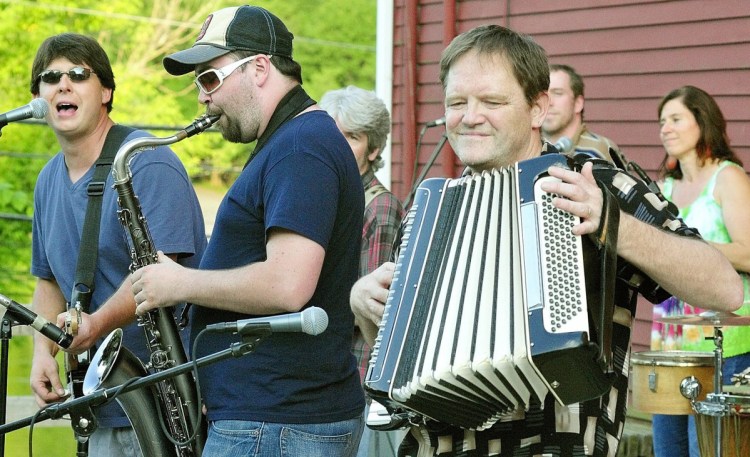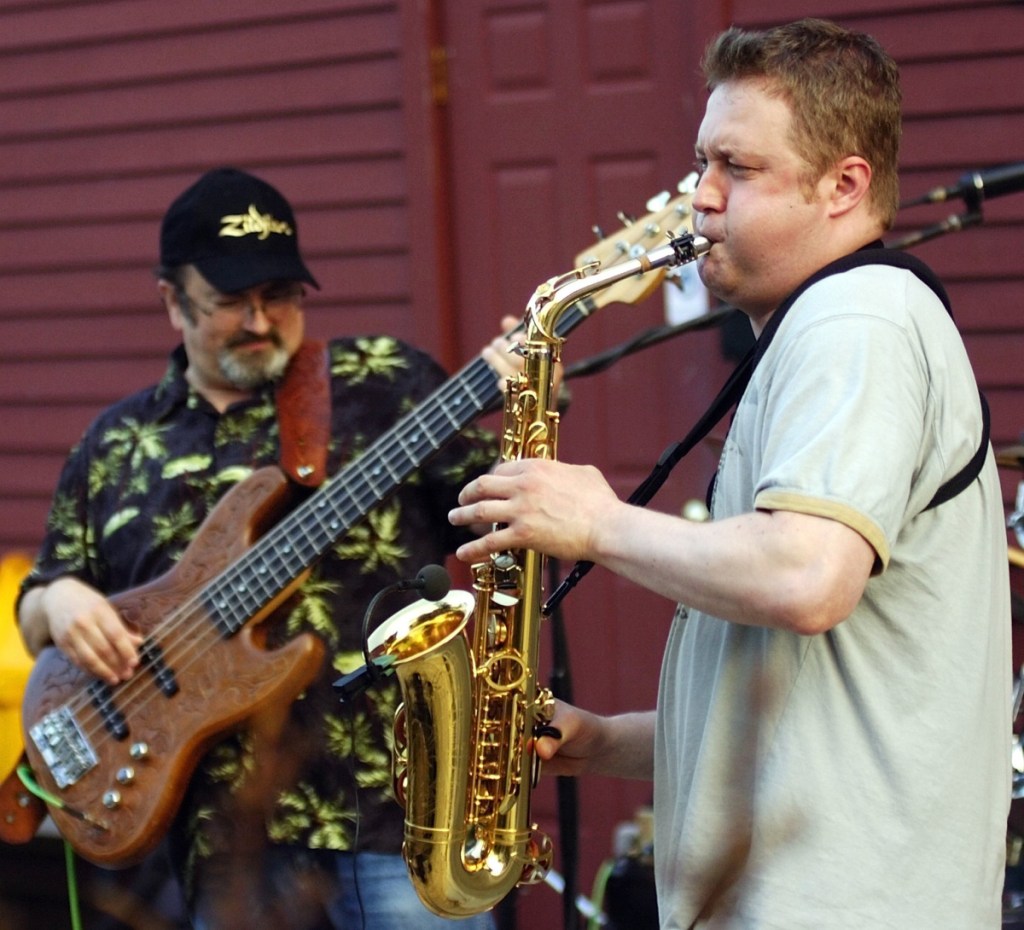HALLOWELL — New amendments to the noise ordinance could turn up the volume in downtown Hallowell.
The Noise Ordinance Committee plans to hold a public hearing at 5:30 p.m. Oct. 25 on the draft ordinance, which raises allowed levels of noise downtown.
The draft ordinance keeps limits the same as usual in all districts except the downtown district, where a general increase in the noise level would be permitted. From Monday to Thursday, the permitted limit from 1 a.m. to 7 a.m. would be 55 decibels. From 7:01 a.m. to 12:59 a.m., the permitted limit would be 70 decibels.
The Occupation Safety and Health Administration likens 50 decibels to the average noise heard outside an “urban residence,” 60 decibels to a “conversation three feet away,” 70 decibels to “classroom chatter” and 80 decibels to a “freight train 100 feet away.”
On Friday and Saturday, limits would be set at 55 decibels from 1 a.m. to 7 a.m., 70 decibels from 7:01 a.m. to 4:59 a.m. and 9:01 p.m. to 12:59 a.m., and 80 decibels from 5 p.m. to 9 p.m.
On Sunday, the limits would be 55 decibels from 1 a.m. to 7 a.m., 70 decibels from 7:01 a.m. to 12:59 p.m. and 5:01 p.m. to 12:59 a.m., and 80 decibels from 1 p.m. to 5 p.m.
All Hallowell districts now allow sound pressure levels — measured in A-weighted decibels from “all major lot lines” — of 50 decibels from 9 p.m. to 7 a.m. and 70 decibels from 7 a.m. to 9 p.m.
There are exemptions for construction noise, farm equipment, regular vehicle traffic, City Council-sanctioned events and events on Old Hallowell day. Council-sanctioned events and events on Old Hallowell Day are subject to a llimit of 80 decibels.
The ordinance was amended last on June 21, but downtown-specific amendments have been in the works since the last amendment, and the council appointed the Noise Ordinance Committee to help write them.
The draft also changes the way noise is measured, stating that noise “shall be measured at any property boundary of the sound source or at any point within any other property in the same district that is affected by the sound.”
The changes also include a clause that allows events to exceed the noise limits via a City Council vote. Abutters of the property requesting to exceed the limits would have to be notified of the meeting, the draft reads. Aforementioned exemptions in the current ordinance would not change.
The proposed ordinance already has passed in July through a first reading of three that are required before it becomes part of the city charter. City Councilor Kate Dufour, a member of the Noise Ordinance Committee, said the current draft is a “starting point” for the next noise ordinance, and the public hearing will be used to edit the draft based on the concerns of citizens.
“We are not the experts on this subject matter; we want to hear from the people who are affected,” Dufour said Friday. “We’re going to be very open to hearing all of the voices and trying to find consensus.”
Committee members include Dufour, former Councilor Maureen Aucoin, downtown resident Ed Miller, Hallowell police Chief Eric Nason, resident Steve Vellani, and downtown business and property owners John and Janet Merrill. Dufour said the committee of “interested parties” decided on the current draft unanimously.
Eric Zwirling, director of the Rutgers University Noise Technical Assistance Center, said noise ordinances usually are written based on effect they have on residents. However, they usually reflect the “jurisdiction’s will” and could promote certain industries.
“The nighttime limits are (usually) based on the level (at) which people would awaken,” he said.
An average home with the window slightly ajar absorbs 15 decibels of noise as it passes through, according to Zwirling. Coupling that with the level of noise that usually awakens a small percentage of sleeping people, 35 decibels, Hallowell’s current limit after 9 p.m. of 50 decibels is modest.
Zwirling said the current 70-decibel limit is fairly loud. He said it’s the level at which a person must raise his or her voice to speak to someone about a foot and a half away. However, the end time is modest, he said, so he sees no problem with the ordinance as it stands.
“We’re not talking about 2 a.m.; we’re talking about 9 p.m.,” he said.
On the change to the ordinance, Dufour said the committee decided on a raise in sound level to help foster live music in Hallowell, which is a “significant attractor” to the city, but recognized the effect music could have on downtown residents.
“We settled in acknowledgment that the city does indeed thrive on live music,” she said. “In the summer months, people like to be outdoors, and music is part of our history.
“The city is well aware of the discomfort that live music can cause for people who (live downtown),” she added. “We started to get feedback from others in the community and (they) really raised concerns with the decibel limit and the hours.”
Quarry Tap Room owner Chris Vallee said he doesn’t receive many noise complaints, generally just one persistent abutter. He said the ordinance probably was crafted to satisfy a number of downtown businesses that offer or will offer live music.
Bruce Mayo, owner of the Easy Street Lounge, did not respond to the Kennebec Journal’s request for comment.
Zwirling said the decibel increase could lead to residents complaining about noise and eventually moving away.
“Allowing increased sound levels on Friday and Saturday nights is common with jurisdictions seeking to increase entertainment revenue,” he said. “That said, it may well lead to increased complaints for dislocation of dissatisfied residents.”
Zwirling, who has provided expert testimony about noise in multiple court cases, said a 10-decibel increase usually represents a “perceived doubling in loudness.” However, on low frequencies such as bass, 6 decibels could be a perceived doubling. He said A-weighted sound meters do not reliably catch the low-frequency noise, which prevents sleep at a higher rate.
“If that’s the level outside a dwelling, the people would not be able to sleep,” he said. “It will prevent from sleeping or awaken people who are asleep,”
He said the strict time limits, if enforced diligently, could prevent a mass exodus of downtown residents.
“I think that most people, in my experience, if they know that there is a bright line end to the noise at a specific time, they can generally tolerate it,” Zwirling said. “But there must be reliable enforcement of that deadline so people know there’s a light at the end of the tunnel.”
Zwirling said enforcing the ordinance could present a problem if no properly trained officers are available to handle equipment used to measure sound pressure.
“It’s not difficult, but it’s not necessarily intuitive,” he said. “The officers (should) receive some training on the use of a sound meter.”
The ordinance would need to be reviewed through two more City Council readings before it is written into the city’s charter.
After any amendments are made by the Noise Ordinance Committee, the ordinance is expected to be discussed at the Nov. 13 City Council meeting.
Sam Shepherd — 621-5666
Twitter: @SamShepME
Send questions/comments to the editors.






Comments are no longer available on this story